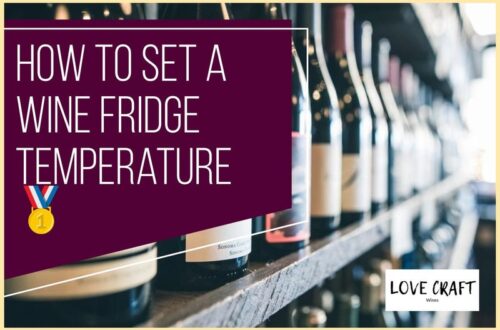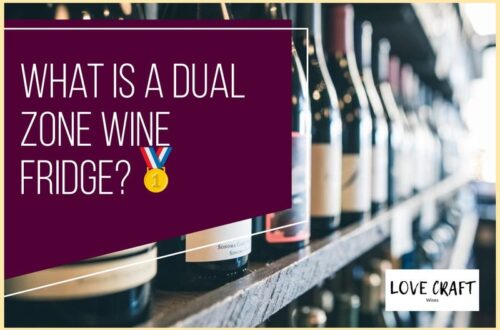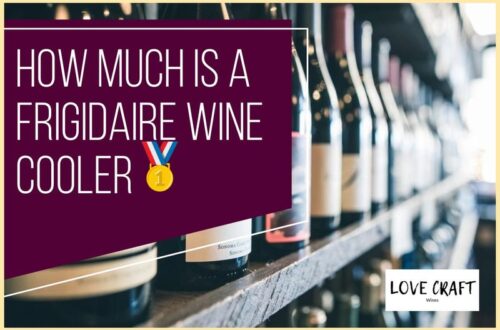Do you often find yourself wondering how much wine is in a box compared to a bottle? You’re not alone. Many wine enthusiasts are curious about the amount of wine they’re getting for their money, and whether boxed wine is a better value than bottled wine.
In this article, we’ll take a close look at the amount of wine in a box and compare it to the amount in a bottle, as well as explore the impact of packaging on wine quality and the pros and cons of boxed wine.
First, let’s get the numbers out of the way. A standard bottle of wine contains 750 milliliters (ml) of wine, which is roughly equivalent to 25.4 fluid ounces (fl oz).
A typical box of wine, on the other hand, contains 3 liters (L) of wine, or 101.4 fl oz. That means a box of wine is equivalent to roughly four bottles of wine.
However, it’s important to note that not all boxes of wine are created equal. Some may contain less wine, while others may contain more, so it’s always a good idea to check the label before purchasing.
Table of Contents
Boxed Wine vs. Bottled Wine: An Overview
You’ll love learning about the differences between boxed and bottled wine in this section!
To start with, boxed wine is usually made with a bag inside that holds the wine and a spigot for pouring. This design allows for wine preservation by keeping the air out of the bag, slowing down the oxidation process that can spoil the wine.
In contrast, bottled wine has a cork or a screw cap that allows air to enter the bottle, making it necessary to drink it within a few days after opening it.
Another big difference between boxed and bottled wine is their environmental impact. Boxed wine is more eco-friendly because it creates less waste than bottled wine. A single box contains the equivalent of four bottles of wine, but it creates 85% less waste than those four bottles would.
The boxes themselves are also recyclable, and they take up less space in landfills than glass bottles. These factors make boxed wine an excellent choice for those who want to enjoy their wine without contributing to the pollution of the environment.
Now that you know the benefits of boxed wine, it’s time to dive into the question of how much wine does a box contain?
How Much Wine Does a Box Contain?
The quantity of vino in a box is akin to a cornucopia of liquid gold.
While boxed wine may not be the first choice for the most discerning wine drinkers, it is undoubtedly a popular storage option among wine enthusiasts.
Boxed wines typically contain three to five liters of wine, which is equivalent to four to six bottles. This means that, in terms of volume, boxed wine is more cost-effective than bottled wine.
In addition, boxed wine has a lower environmental impact than bottled wine because it generates less waste and has a lower carbon footprint. However, the amount of wine in a box may vary depending on the brand and the type of wine.
Boxed wines can be made from different grape varieties and can have different alcohol content. Some boxed wines are more concentrated than others, which means that they contain more alcohol and less water. This affects the overall volume of wine in the box.
It’s important to read the label carefully before purchasing a box of wine to ensure that it contains the right amount of wine for your needs. In the next section, we will look at the impact of packaging on wine quality.
The Impact of Packaging on Wine Quality
When you pour a glass of wine, you want to savor the rich flavor and aroma that comes with it, but did you know that the packaging of the wine can have a significant impact on its quality?
Wine oxidation is a common problem that occurs when wine is exposed to air, causing it to lose its flavor and aroma. Bottles are typically sealed with a cork, which can allow air to seep in over time, leading to oxidation. On the other hand, boxed wine is typically sealed with a vacuum-sealed bag, which prevents air from entering and keeps the wine fresh for longer.
In addition to the impact on wine quality, the packaging of wine also has an environmental impact. Bottles are made of glass, which requires a significant amount of energy to produce and transport. They are also heavy, which increases the carbon footprint of shipping.
In contrast, boxed wine is typically made of cardboard, which is much lighter and easier to transport. Additionally, the vacuum-sealed bag inside the box can be recycled, further reducing its environmental impact.
Cost Comparison: Boxed Wine vs. Bottled Wine
If you’re looking to save some cash without sacrificing quality, consider opting for boxed wine instead of the pricier bottled variety. Here are some reasons why boxed wine may be a more cost-effective option:
-
Price difference: Boxed wine is typically cheaper than bottled wine due to lower production costs and packaging expenses. This means you can get more wine for your money without compromising on taste or quality.
-
Environmental impact: Boxed wine has a smaller carbon footprint than bottled wine since it generates less waste and requires less transportation. This makes it a more eco-friendly choice for those who prioritize sustainability.
-
Convenience: Boxed wine is easier to carry and store than bottled wine since it is more compact and lightweight. It also stays fresh for longer once opened, which reduces the likelihood of waste and spoilage.
-
Variety: Boxed wine comes in a wide range of flavors and styles, including red, white, and rosé. This means you can find a boxed wine that suits your taste preferences and occasions.
-
Quality: Contrary to popular belief, boxed wine can be just as high-quality as bottled wine since it is often produced using the same grapes and winemaking techniques. Some boxed wine brands have even won awards for their taste and aroma.
While boxed wine has many advantages over bottled wine, it also has its drawbacks. In the next section, we’ll explore the pros and cons of boxed wine to help you make an informed decision.
Pros and Cons of Boxed Wine
You don’t want to miss this: weighing the pros and cons of boxed wine can help you make a smart and satisfying decision for your next wine purchase.
Boxed wine has become increasingly popular due to its convenience and affordability. But is it worth sacrificing the taste and quality of bottled wine for the convenience of a box? Let’s take a closer look.
One of the biggest advantages of boxed wine is its wine preservation. The packaging design prevents oxidation and air from entering the box, keeping the wine fresh for weeks or even months after opening. This means you can enjoy a glass of wine whenever you want without worrying about the rest of the bottle going to waste.
Additionally, boxed wine has a lower environmental impact compared to bottled wine. The packaging is made of recyclable materials, and the lighter weight means it requires less energy and resources to transport. However, some may argue that the quality of boxed wine is not as high as bottled wine due to the packaging process. It’s important to note that not all boxed wines are created equal, and some brands may offer a higher quality product than others.
Frequently Asked Questions
What is the environmental impact of boxed wine compared to bottled wine?
When it comes to the environmental impact of wine packaging, boxed wine may seem like a better option at first glance. However, the truth is a bit more complicated.
While boxed wine does produce less packaging waste than bottled wine, the boxes themselves are often not recyclable and can take up more space in landfills. Additionally, the carbon footprint of producing and transporting boxed wine can sometimes be higher than that of bottled wine due to the use of plastics in the bag inside the box.
Ultimately, the environmental impact of wine packaging depends on a variety of factors, including the specific brand and type of wine, and both boxed and bottled wine come with their own set of pros and cons when it comes to sustainability.
Can boxed wine be stored for as long as bottled wine?
You’re probably wondering if boxed wine can be stored for as long as bottled wine. Well, the answer is not a clear-cut yes or no.
Although boxed wine has come a long way in terms of quality and can last up to a month after opening, long term storage is a different story.
The main concern with storing boxed wine for an extended period is the risk of oxidation. Unlike bottled wine, boxed wine is exposed to more air, which can lead to accelerated aging and spoilage.
However, some boxed wines come with a vacuum-sealed bag inside, which can help prolong its shelf life.
So, while boxed wine can be a cost-effective and eco-friendly option for short term consumption, it’s best to stick with bottled wine if you’re looking to cellar for the long haul.
As the old saying goes, ‘good things come to those who wait.’
Are there any differences in taste between boxed wine and bottled wine?
When it comes to wine preservation, packaging materials play a crucial role in maintaining the quality of the wine. The taste of wine can be affected by various factors such as oxygenation, temperature, and light exposure. This is where the packaging material comes into play.
Bottled wine is traditionally sealed with a cork, which allows for a controlled amount of oxygenation that can enhance the flavor over time. On the other hand, boxed wine is sealed with a plastic spout that limits oxygenation, making it less susceptible to spoilage. However, the packaging material of boxed wine can also affect the taste due to the potential for plastic leaching.
It’s important to consider the quality of the wine and the intended storage period when choosing between boxed and bottled wine.
How do the prices of premium boxed wines compare to those of bottled wines?
You’re a wine connoisseur, and you appreciate the finer things in life. You’ve heard the buzz about premium boxed wines and wonder if they’re worth the hype.
When it comes to value for money comparison, boxed wine beats bottled wine hands down. Premium boxed wines offer exceptional quality at a fraction of the cost of bottled wines. In fact, boxed wines can save you up to 40% compared to bottled wines.
So, if you’re looking for high-quality wine without breaking the bank, premium boxed wines are the way to go.
Do boxed wines come in the same variety as bottled wines?
Boxed wines have come a long way in recent years and now offer a wide variety of flavor profiles. While many people still associate wine packaging with traditional glass bottles, boxed wines have become increasingly popular due to their convenience and affordability.
In fact, some wineries are now exclusively packaging their wines in boxes. Boxed wines are not just limited to basic red and white varieties, but also include more complex blends and unique varietals. With advancements in technology and packaging, boxed wines can now maintain their freshness and flavor for up to six weeks after opening.
So next time you’re in the market for a bottle of wine, don’t overlook the options available in boxed packaging.
Conclusion
So, there you have it – the amount of wine in a box compared to bottles, the impact of packaging on wine quality, and the pros and cons of boxed wine.
But what does it all mean for you, the wine lover?
Think of boxed wine like a paperback novel – easy to transport, quick to consume, and not too heavy on the wallet. Bottled wine, on the other hand, is like a hardcover novel – more expensive, takes up more space, but often worth the investment for the experience it provides.
Ultimately, it’s up to your personal preference and budget to determine which one you choose. Just remember to always enjoy responsibly and savor every sip, whether it’s from a box or a bottle.
Cheers!





